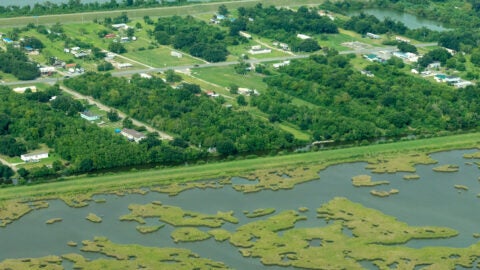Advanced methane technologies can strengthen new landfill pollution limits
(This post was co-authored by EDF’s Peter Zalzal)
When organic waste ends up in landfills, it produces methane — a powerful climate pollutant —as it decomposes.
In the U.S., landfills are our third largest source of methane and a major driver of climate change. They also emit large amounts of health-harming and even cancer-causing pollution, such as toxic benzene, that endangers nearby communities. And to make matters even worse, they cause noise and odor problems.
Recent scientific studies indicate that landfills may be an even greater source of pollution than we thought. A study led by scientists at Carbon Mapper and recently published in the journal Science surveyed 20% of open U.S. landfills and found significant point source emissions at the majority (52%) of sites.
Earlier work based on data from the TROPOMI space satellite looked at 73 landfills and found their pollution was, on median, 77% more than what was reported to EPA’s Greenhouse Gas Reporting Program.
Advanced methane monitoring technology has developed rapidly in recent years, creating new opportunities to substantially reduce harmful pollution from landfills. EPA’s recently finalized oil and gas standards allow operators to deploy these technologies, such as aerial flyovers and drones, to find and fix methane leaks.
Building from this work, EPA now has a vital opportunity to incorporate advanced technologies into new landfill rules.
EPA is required, under the Clean Air Act, to revisit its landfill rules this August. EPA last updated our landfill standards in 2016. However, since that time, new studies have shown even more significant pollution from landfills, and new technologies and mitigation practices have developed that can dramatically reduce that pollution.
Last summer, EDF joined allies in calling on EPA to expeditiously update our landfill standards to protect nearby communities and help slow climate change. Updated standards can also help the U.S. meet commitments under the Global Methane Pledge and the Paris Agreement.
A new white paper just released by EDF provides further details on the capabilities of new technologies – including satellites, remote sensing technologies, and drones – and describes advances at the state level, including in landfill standards adopted by Maryland, Oregon, California, and Washington.
Based on these advances, many of which have been effectively incorporated in recent EPA actions to reduce oil and gas methane emissions, the paper provides recommendations for how more protective standards can leverage advanced technologies to substantially reduce pollution at landfills.
The paper specifically recommends:
- Using new monitoring approaches to find high-emitting smaller landfills that are disproportionate polluters and ensure they take cost-effective mitigation action
- Increasing landfill surface and flare monitoring to ensure systems designed to capture and destroy methane are operating efficiently
- Leveraging data on super-emitters seen from satellites and flyovers to understand causes and enable fixes
EDF respectfully urges EPA to include these new technologies in updated landfill standards, and to move forward swiftly with protective standards that substantially reduce the climate pollution and health-harming pollution that endangers communities across the country.












